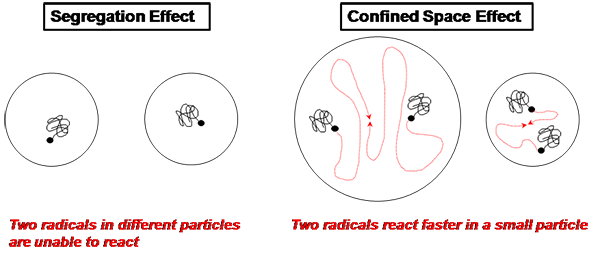Polymer Synthesis 1
Synthesis of polymer of well-defined microstructure by combination of template polymerization and compartmentalization (nanoreactors)Investigators: One of the long-standing challenges in polymer chemistry is to prepare polymer of tailor-made well-controlled microstructure. Nature synthesizes proteins and nucleic acids via polymerization methods using well-regulated, segregated templates. This project is concerned with a new polymerization methodology that mimics this approach by conducting a radical polymerization based on template polymerization within so called nanoreactors. Block copolymer templates are designed to assemble in a biomimetic fashion to segregate the radical polymerization of complementary nucleobase containing vinyl monomers, to yield high molecular weight, low polydispersity polymer chains with unprecedented control over structure (without relying on controlled/living radical polymerization such as RAFT etc)  Figure 1. Schematic illustration of templated radical polymerization in nano-reactors (diblock copolymer micelles), relying on hydrogen bonding between thymine and adenine moieties Template polymerization refers to how monomer units are essentially “lined up” in well-defined “slots” along a pre-formed polymer (e.g. via H-bonding), and subsequently polymerized along this template. Compartmentalization (the nanoreactor concept) refers to how the progression of a radical polymerization can change if it is carried out in a confined nanospace, such as within a micelle or polymer nanoparticle. When conducted within nanoreactors, a radical polymerization may be influenced by the segregation effect and/or the confined space effect (Fig. 2). Under appropriate circumstances, the kinetics within nanoreactors can be exploited to essentially exert some control over the polymerization. More specifically, the extent of bimolecular termination can be reduced if radicals are segregated in separate nanoreactors. The idea of this project is thus to create micelles, where template polymerization occurs within the micelles, thereby combining the concepts of template polymerization and compartmentalization.  Figure 2. Schematic illustration of effects of compartmentalization in radical polymerization in nano-reactors References
|
